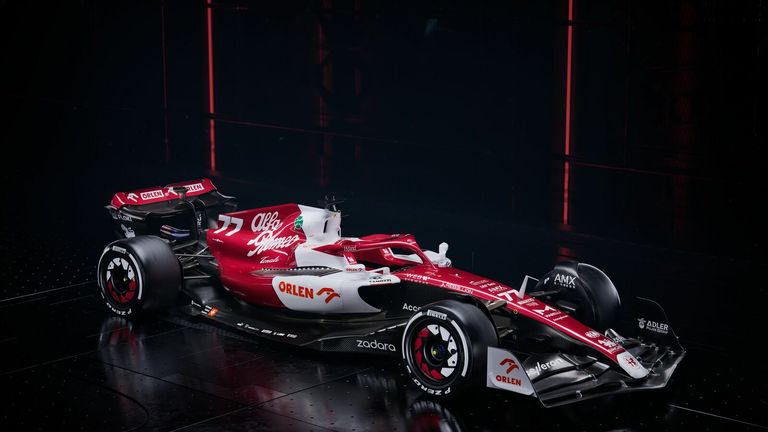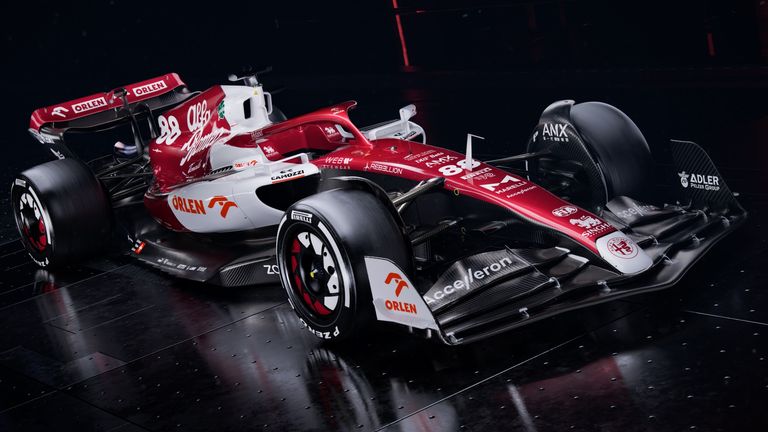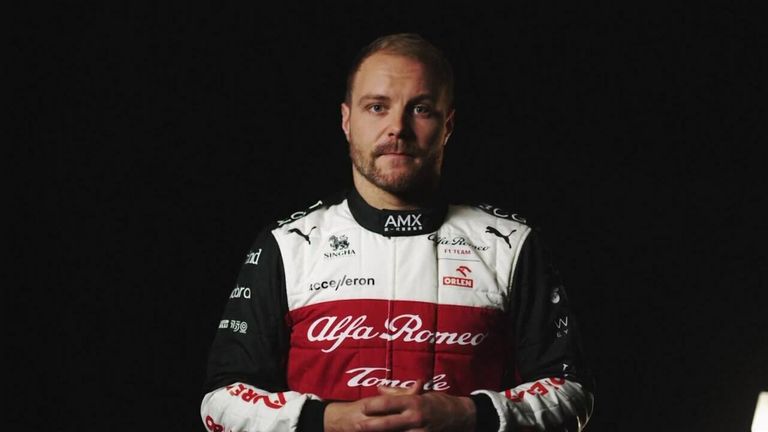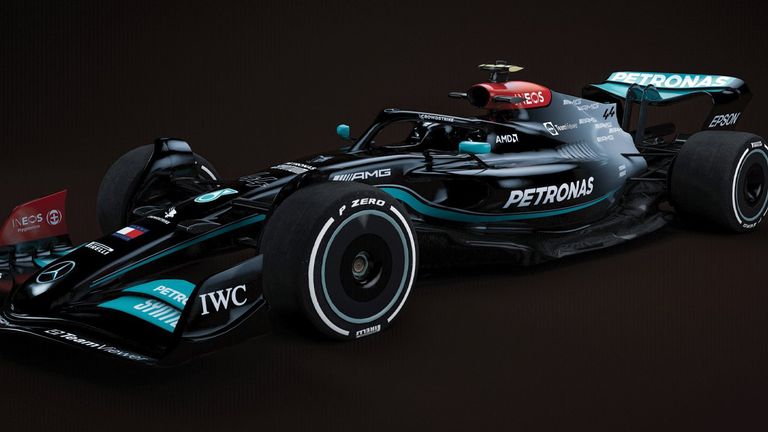Formula 1: Alfa Romeo reveal eye-catching livery of red and white - the last car on 2022 grid
The C42 will be put firmly in the hands of 10-times race winner, Valtteri Bottas, and Zhou Guanyu, the first F1 driver from China and the only rookie on the grid in 2022
Sunday 27 February 2022 12:45, UK
Alfa Romeo have revealed their car for the new era - an eye-catching livery of red and white - completing the grid for the new Formula One season.
The C42, powered by a new Ferrari engine, is a subtle nod to the past and the heritage of Alfa Romeo and Sauber Motorsport, in the Hinwil team's 30th year in F1.
After five years with Mercedes, Valtteri Bottas signed a multi-year deal with the Hinwil-based team and the Finn has been suitably impressed by the new car.
"I think the livery is really beautiful, the Alfa Romeo Centro Stile did a brilliant job," said the 32-year-old.
"It's my first car at Alfa Romeo F1 Team ORLEN, of course, which makes it special, and I am really looking forward to being on the grid in Bahrain with it. What is exciting is that we have no idea how that first race is going to pan out."
- Horner: Masi received death threats after Abu Dhabi
- F1 testing: Latest headlines
- F1's future starts here: New cars explained
Guanyu Zhou, who this season will become the first Chinese Formula One driver, made his testing debut in a camouflage livery car.
Speaking about the red and white look, the 22-year-old said: "I am fully pumped up for the season and seeing the C42 in the livery in which I will race it definitely makes it real.
"We are at the beginning of a new era, with new cars and new regulations, and this creates an opportunity for all teams to make progress since we are all starting from scratch.
"I can't wait to be on the grid with this car and work with my team to bring home the results we are targeting together."
Teams will head to Bahrain for the another three-day test from March 10-12 before the season-opener in the island kingdom on March 20 - live on Sky Sports.
Explaining F1's dramatic new cars
Why is F1 changing?
You're probably wondering why - after one of the most exciting seasons in decades - F1 is completely overhauling its rules and cars.
There's a few explanations for that. Traditionally, regulations have been changed for safety, as if F1 just keeps letting teams make their cars faster and faster - the last era of cars were the quickest-ever - then it gets more and more difficult to make the sport as safe as possible.
That may have been a factor for this year's revolution, although the main reason is that F1 wanted to move on from an era that has been - Max Verstappen's title win aside - dominated by Mercedes, while also providing fewer overtaking opportunities than hoped due to the weight, speed and downforce of the cars.
The new rules, which were initially planned for 2021 before being delayed due to the pandemic, are aimed at improving the show, first and foremost, and F1 is hoping for unpredictability and plenty of excitement.
What are the changes?
The rule changes mean we have a completely new generation of cars.
The concept, marking one of the biggest technical changes in F1 history, has been overhauled from recent years and is, in essence, a simplified yet striking new-look race car following a drastic aerodynamics overhaul.
The key changes are:
- A ground-effect floor. The 2022 car has two long underfloor tunnels which create a 'ground effect' - meaning there is more suction under the car to pull it to the tarmac, while also ensuring more of the downforce is generated from under the car. The concept was popular back in the 1970s and '80s in F1.
- A simplified front wing and a sharp new rear wing. These not only look great, but the completely new parts on the 2022 cars have been designed to stop sending airflow outwards, narrowing it instead. The curved rear wing still has DRS, although it may be less impactful.
- 18-inch tyres with wheel winglets. Another throwback addition, the bigger tyres are aesthetically pleasing while they should also improve the handling of the cars. The winglets have been added to help direct air away from the rear wing.
What will the changes do?
The new cars don't just look a lot different, but they should have a marked effect on the on-track product, with more exciting and competitive wheel-to-wheel racing the expectation.
They are designed with a focus on shifting the aerodynamic focus from the wings to underneath the car, making it easier to follow the car in front, and thus improve racing.
F1's estimations are that the 2021 cars lost 35 per cent of their downforce within three car lengths of the car in front and almost 50 per cent in a single car length. You may have heard the words 'dirty air'.
The new cars? They claim to drop those numbers to just four and 18 per cent respectively.
"They're relying a lot more on air passing underneath the car very quickly which sucks the car down onto the ground, and gives what we like to call ground effect," said Sky F1's Ted Kravitz.
"You've created a vacuum," added Anthony Davidson. "There's suction to the ground, and you're relying less on the wings to give you rear grip, and more on the floor."






